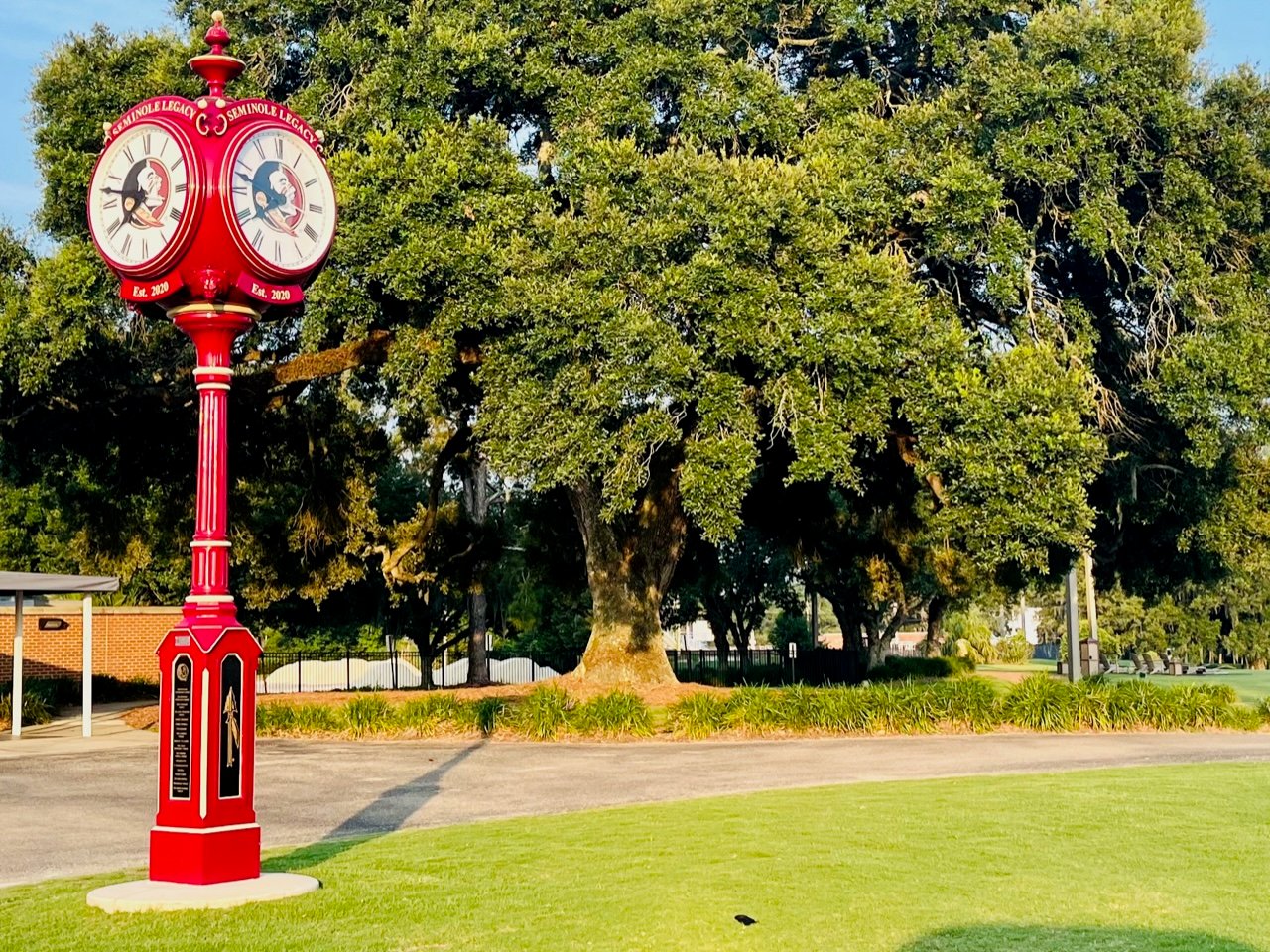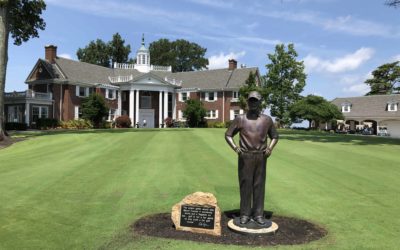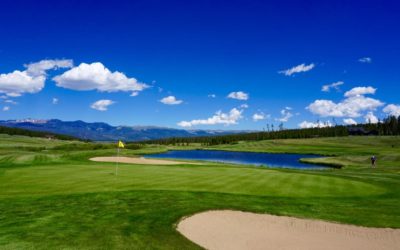The San Jose Country Club clubhouse has been refurbished and should continue to meet the Club’s needs for the next few decades. This view is from below the par-four 18th green to the right and the par-four 6th tee is immediately in front of the clubhouse. (Photo courtesy of San Jose Country Club)
 You venture into the heart of the Silicon Valley in Northern California. Everything is about newness, new things, new ideas. It is one of the American epicenters of conspicuous consumption. There is wealth being created beyond belief. Accordingly, you might expect glitzy, ostentatious over-the-top golf clubs like a Donald Trump might fashion, where money is more important than golf values, and where virtually no one cares or knows about the shoulders of the past that gave them the chance to leap into the future. Yes, there are some golf facilities like that where initiation fees are closer to mid-six figures and cell phones are your cart partners, but not at San Jose Country Club. SJCC is an oasis of traditional “pure golf” where nearly everyone savors their history and they are just as busy enjoying the present and is naturally giving to sustain an even greater future. It’s a breath of fresh air amidst the 24/7 crazy energy that surrounds its location in the foothills just east of San Jose. Yes, SJCC has been in the forefront of Northern California golf with classic golf values for more than a century.
You venture into the heart of the Silicon Valley in Northern California. Everything is about newness, new things, new ideas. It is one of the American epicenters of conspicuous consumption. There is wealth being created beyond belief. Accordingly, you might expect glitzy, ostentatious over-the-top golf clubs like a Donald Trump might fashion, where money is more important than golf values, and where virtually no one cares or knows about the shoulders of the past that gave them the chance to leap into the future. Yes, there are some golf facilities like that where initiation fees are closer to mid-six figures and cell phones are your cart partners, but not at San Jose Country Club. SJCC is an oasis of traditional “pure golf” where nearly everyone savors their history and they are just as busy enjoying the present and is naturally giving to sustain an even greater future. It’s a breath of fresh air amidst the 24/7 crazy energy that surrounds its location in the foothills just east of San Jose. Yes, SJCC has been in the forefront of Northern California golf with classic golf values for more than a century.
The labels “family club” and “classic parkland golf course” will often be mentioned in reference to the venerable San Jose Country Club, but neither begins to characterize Silicon Valley’s oldest private club or its celebrated golf course. Whether for its active leadership in regional golf, history of outstanding players, congenial membership or its fascinating golf course, SJCC is so much more!
First off, with the election of Pat Quinn to the Presidency of the Northern California Golf Association, SJCC contributes its 3rd President in the last fifteen years and fourth overall (Chris Clark, 2012; Gary Vanderweghe, 2002; and J. A. Mackenzie, 1919-1921). Reminiscent of the old elite private golf clubs usually associated with the East Coast, remarkably SJCC is one of those few area clubs that boasts a host of 2nd and even 3rd generation members.
NCGA President Pat Quinn is one of those proud 3rd generation legacy members who have been so proactive in the Club. He grew up adjacent to the 16th hole, the son of members Charlie and Dawn who were leaders in the Club along with a host of other relatives; and today he lives only a few blocks from the facility. His love and enthusiasm for the game, his club, and the NCGA is contagious. Like his fellow members, he is rightfully proud that the Club has been in the forefront of many programs including “Youth On Course,” and youth caddy programs teaching life values and introducing youngsters to the game. Pat Quinn neatly sums up San Jose CC – “It gives back.”
As for interesting history, did you know that only three months after Ben Hogan won his first major, the 1948 U.S. Open, and just prior to his near career-ending automobile accident, he performed a shot-making clinic with a 6-under par score of 64 during his first and only visit to the club? But even more impressive than hitting all eighteen greens in regulation, his approach shots were never more than a flagstick’s distance from the hole!
Another little known fact about SJCC occurred in July 1919, when Air Golf was played there. Pilots flew above the course while dropping golf balls near the tees, whereupon members would finish playing the balls to complete that hole. Understandably, Air Golf was short-lived, but the traditional game and its classic values remain the foundation of this family-oriented club that has been one of the stalwarts of the Northern California golf landscape in many ways.
In the late 1990’s, the Club shared their space as an on-course laboratory for the InteleCady, the World’s first autonomous personal service robot – a space-age golf caddy. Designed to preserve the option of walking, several Members were instrumental in the GPI company that got this product to market, but eventually exhausted their funding. My point is that SJCC was thinking ahead and happy to again be in the forefront to assist traditional golfing values.
Established in 1899, San Jose CC is drenched in history as one of the original NCGA founding clubs along with Menlo CC, Oakland GC (now Claremont CC), Presidio GC, Linda Vista (now San Jose CC), and San Francisco GC. For more than a century an illustrious lineup of renowned sports figures have shaped divots on the storied turf including the likes of Walter Hagen, Gene Sarazen, Byron Nelson, Sam Snead, Patty Berg, Babe Didrikson Zaharias, and baseball icons Babe Ruth, Ty Cobb, and Joe DiMaggio. Plus, Northern California golf legends Ken Venturi, Johnny Miller, Julie Inkster, and Patty Sheehan all frequented the club while honing their games and PGA TOUR members Roger Maltbie and Joseph Bramlett were graduates of the Club’s ongoing ambitious Junior Golf Program. Additionally, the course has for decades been the home to San Jose State University’s and several local high schools’ golf teams so that many other outstanding young players have graced its fairways. Pat Quinn shares that the Club also annually extends playing privileges to several promising young golfers as well as has long had an affordable “Young Executive” membership to those between the ages of 21and 39 so as to bridge that often financially challenging time and make for a “farm system” of sustaining members.
SJCC was first introduced as a nine-hole course known as the Linda Vista CC (loosely translated in Spanish, means, “pretty view.”), located on Alum Rock and Kirk Avenues. At that time, it became the eighth course to open in California and the fourth in the Bay Area, preceded only by Burlingame CC (1893), San Francisco GC (1895) and Presidio GC (1895).
Initiation fees to Linda Vista CC were $10 for gentlemen and $5 for ladies, with annual membership dues the same amount. And yes, women were accorded full memberships. Interestingly, club revenues were subsidized predominantly from the surrounding land because the hayfield yielded roughly $120 for each of the three mowings annually. The tee boxes were board based covered with doormats while the greens were circular areas cut in the hayfield and covered with an asphalt oil-type base topped with sand.
In 1912, the club moved to its present location with Scottish-born Tom Nicoll, its first head pro, designing the layout. From 1912 to 1920, a flock of sheep were instrumental in keeping the grass fairways in playing condition and only after rains were the fairways mowed, using a horse with special leather shoes to minimize digging into the turf while pulling a three-gang mower.
SJCC’s architectural pedigree was enhanced when esteemed architect A.W. Tillinghast visited the site on March 16, 1936. Satisfied with original routing, he advised the club’s skillful greenkeeper, George Santana, to reconstruct new greens on the first and 14th holes, modify the seventh, eighth, 11th, 12th, 15th, 16th greens and third hole bunkering; all he termed “antiquated.” Approximately one year later Tillinghast returned to give the thumbs up to Santana’s work that Tillinghast wrote, “had been carried out most satisfactorily and I was glad to be able to approve everything.”
In conjunction with that second visit, Tillinghast made further recommendations including new putting surfaces, bunker modifications, and shifting a couple of fairway lines, which is assumed Santana and the very involved club committee implemented. While Nicoll’s basic routing again remained, the renovations reflected Tillinghast’s perspective and insights. To maintain the layout’s richness and create a Master Plan moving forward, the late golf course architect John Harbottle added his touches in 1997, and then Love & Kington Golf Course Design arrived in 2014 to perform bunker renovation. They also softened slopes on the fourth and 15th greens that had become too severe given today’s much faster green speeds.
Throughout the years, SJCC has earned a notable reputation for its roster of elite-playing members including club champions Ernie Pieper, Roger Maltbie, Ken Venturi, Don Edwards, brothers Jack and Eli Bariteau, Greg Galasso, and Stanford graduate Joseph Bramlett, who in 2010 became only the second African-American to qualify for the PGA TOUR after Tiger Woods. Indicative of the depth of quality players at the Club, through 2016, 16 different members have won 46 of the 90 Santa Clara County Championships with Ernie Pieper’s amazing 15 victories over six decades the prompt for re-naming the Championship in his honor. Considering that many top collegiate players as well as future touring professionals annually compete in this stellar field, that all is quite a feat!
On the club golf professional side, its longtime professional, Eddie Duino Sr. (1932-70) is regarded as one of the Northern California PGA’s most esteemed members. In 1959, Duino was awarded the 1959 (National) PGA Golf Professional of the Year, the PGA of America’s highest honor and the first Member from Northern California to ever receive the award. In 2005, he was inducted into the PGA of America Hall of Fame. Duino’s protégé and successor, Gary Plato (1971-89) became a standout leader in the Northern California PGA, serving as Section President (1978), Interim Executive Director in 1991, and long-serving Board member. Plato, himself, was awarded the Northern California PGA Section’s “Professional of the Year” in 1980 and his outstanding junior golf development has been regarded among the best.
San Jose country club golf course
When it comes to golf at SJCC, the course is far from a typical cookie-cutter parkland layout. It’s loaded with character and could easily qualify as a “wolf in sheep’s clothing.” If you’re into judging a course from its scorecard, SJCC will surprise you at nearly every turn. For a par-70 course, the forward tees are actually pretty stout at 5,557 yards, but the tips measuring 6,225 yards appear somewhat anemic relative to today’s longer hitters. Tell that to the scratch players who have competed in ninety Ernie Pieper Santa Clara County Championships there. As NCGA President Pat Quinn reminded me, “It’s a fast playing course,” and any championship player will agree that that is one feature that separates the good from the best even though it hasn’t changed much in the last hundred years. Yes, former touring pro Dick Lotz once fired an 11-under par round course-record of 59 here, but this is a layout that must be finessed and not overpowered. The Course typically more than holds its own, even with today’s power players.
This is a beautiful view of the par-four 6th green in the foreground, the par-five 16th green to left, and the entire par-three 7th hole to the right. In the distance is the generally flatter portion of the layout. (Photo courtesy of San Jose Country Club.)
Built on a very compact piece of property, the layout occupies just 89 acres yet never feels compressed for it is routed as a “core” design with homes situated only on the outer boundaries and every hole has an adjoining one. It has a benign parkland appearance, but it is really target golf, especially when approaching the small, well guarded, sloped greens defined by the attractive flashed bunkering. These targets require precise positioning of your approach shot for good scoring. On the slick, smooth putting surfaces, you will definitely be on the defensive should you be above the hole.
If you’ve never played the course before, the short, uphill 2nd hole will be but one of the hilly interesting challenges you face within the opening four-hole stretch. (Photo courtesy of San Jose Country Club)
Situated in the foothills east of downtown, the topography plays an important role at SJCC. The first four holes are downright hilly and adventurous. One of the great treats on the course is the panoramic scene of the Bay Area from the tee box at the par-4 fourth, where on a clear day even the Golden Gate Bridge is visible. In fact, in the early 1900’s, this viewing point provided SJCC the distinction as the only course in America where all 18 could be seen from one spot.

The long, downhill par-four illustrates the wild terrain that faces you in the first four holes at SJCC. Architect Bill Loves softened the forward sloping small green, but this is still a very challenging test. (Photo courtesy of San Jose Country Club)
Following this vantage point, SJCC is very walkable and though the layout appears to flatten out, don’t be lured into that deception. The terrain continues with a subtle decline toward the west with a few elevated tees and a defense consisting of a couple of elevated putting surfaces with fast, firm surfaces, and seemingly narrow tree-lined corridors that will continue to exacerbate misjudged shots. And if the tendency is to slice the golf ball, out-of-bounds can become a magnet on at least eleven holes.
The three par-fives during the last eight holes are vulnerable to good scoring, but over all, it is the one- and two-shot holes that seem to define the layout’s strength and seductive appeal. With a variety of hole lengths, directions, and elevation features from start to finish, SJCC is absolutely a tougher challenge than the scorecard indicates, yet features good playability and provides an engaging flow that will entice the use of every club in the bag. In short, the course is one of the reasons that Club both develops and continues to attract excellent players, and you have to have a complete short-game with all the shots to succeed here. All said, SJCC easily qualifies as a very interesting challenge.
The short par-four 18th is anything but an “automatic par” as golfers MUST find the fairway and then hit over a deep barranca to a small, well-bunkered sloping putting surface. The tree to the back left of green is one of the most distinctive ones on any West Coast golf course. (Photo courtesy of San Jose Country Club)
The golf course and history of a club such as San Jose’s may make for interesting copy, but inevitably it is the people and their feelings toward one another that really define a “great club.” SJCC is that “great club.” Its runs a very active social calendar and the restaurant serves as a popular attraction for its membership. While many a club’s marketing brochures may tout themselves as “family clubs,” SJCC really is one. This is an aspect that has really impressed General Manager Ed Winiecki. Said Winiecki, “San Jose CC is truly a family, a genuine second-home for all its members. It’s comfortable, but unpretentious, and ever so welcoming.” He continued, “I’ve also never witnessed a membership that so embraces its history. They are amazingly well versed on what has happened throughout their history, not just the past few years. It’s one big family.” Chat with not just a member, but anyone who has visited the Club, and the word “friendly” is always bound to surface. Not surprisingly, SJCC’s membership draws from a wider area than most clubs and has also included several local golf professionals with its course being a magnet and its traditions and camaraderie serving as the glue.
With an eye to the future, families are a keystone of SJCC and the swimming pool is apt to be busy during season, but after 118 years, golf is still king and will always be the backbone of the club’s rich history that includes one of its early (1920’s) golf professionals, Abe Espinoza, becoming the first Hispanic to win (twice) on the PGA Tour, and Ida Pieracci, who played regularly until she was 102 years old (now 104) and scored a course record 11 holes-in-one. Or imagine a young Hank Lucente caddying at the Club in the 1930’s only to return as an elite player in the 1950’s and today in his 95th year he has now shot his age on this testy layout more than 800 times! In addition, as a tribute to the club’s legacy, only seven PGA club professionals have held the top post, including the most current, Ed Winiecki, who came on board January 2016.
Where an engaged, giving membership, elite friendly staff, outstanding junior golf programs, sharing their beautiful golf course, and volunteering to be of service to the game are continuing themes at San Jose CC, the club has undeniably thrived on its esteemed continuing heritage to carve out a distinctive mark as a leading citizen in the Northern California golf community into the future – giving back.
# # #

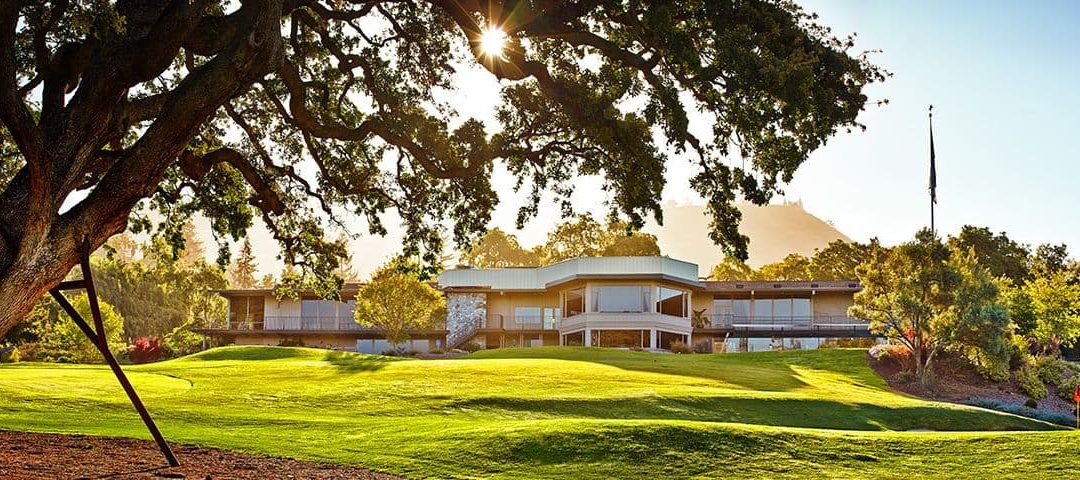








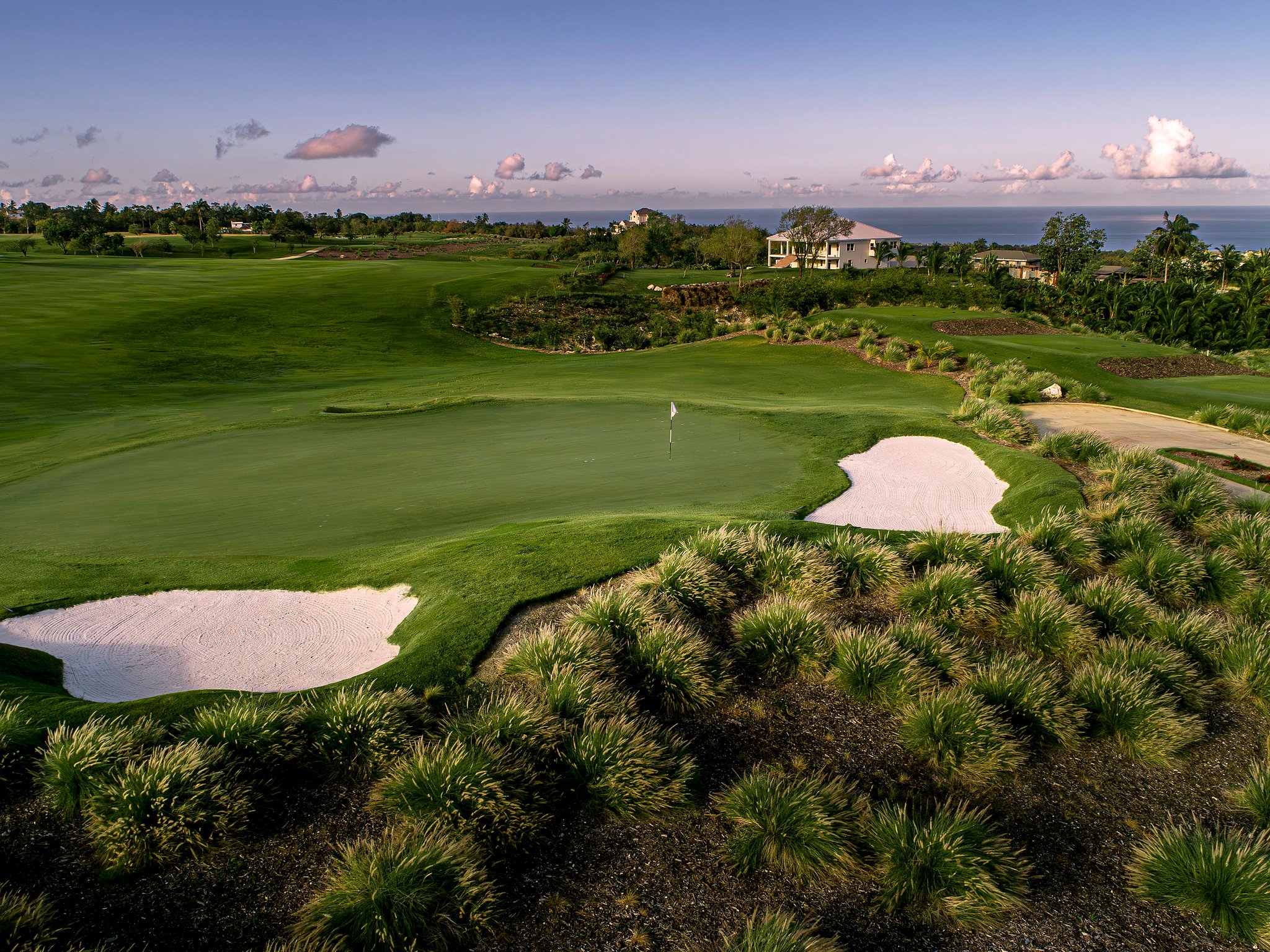
 0
0
